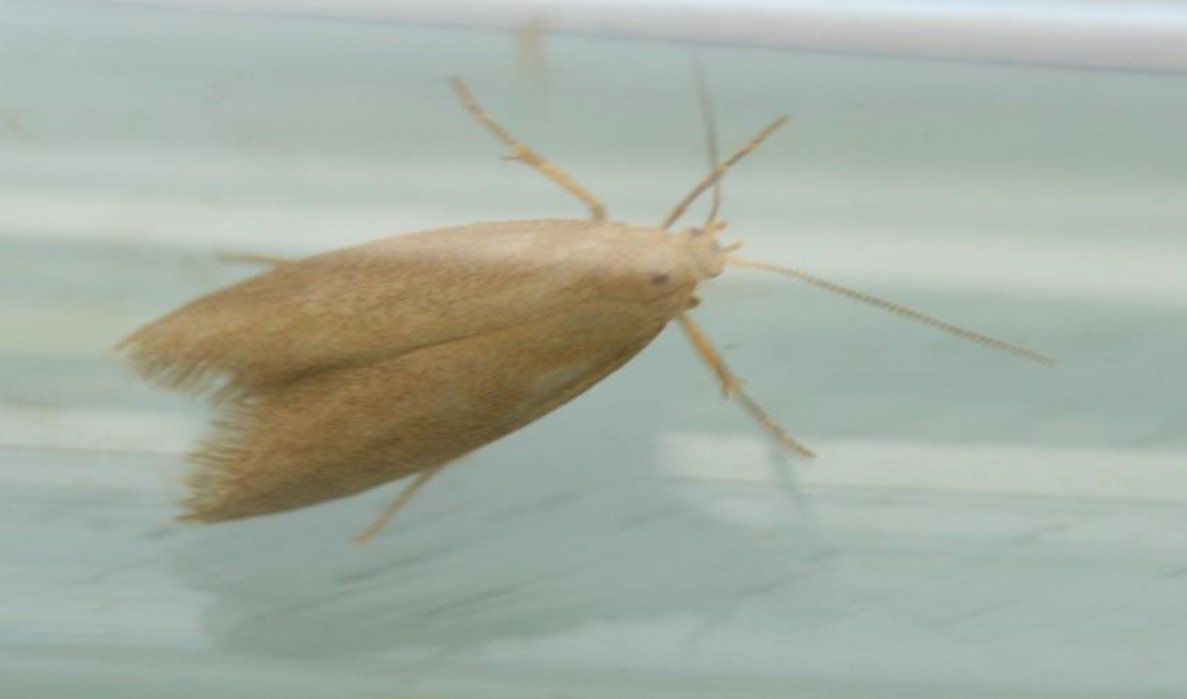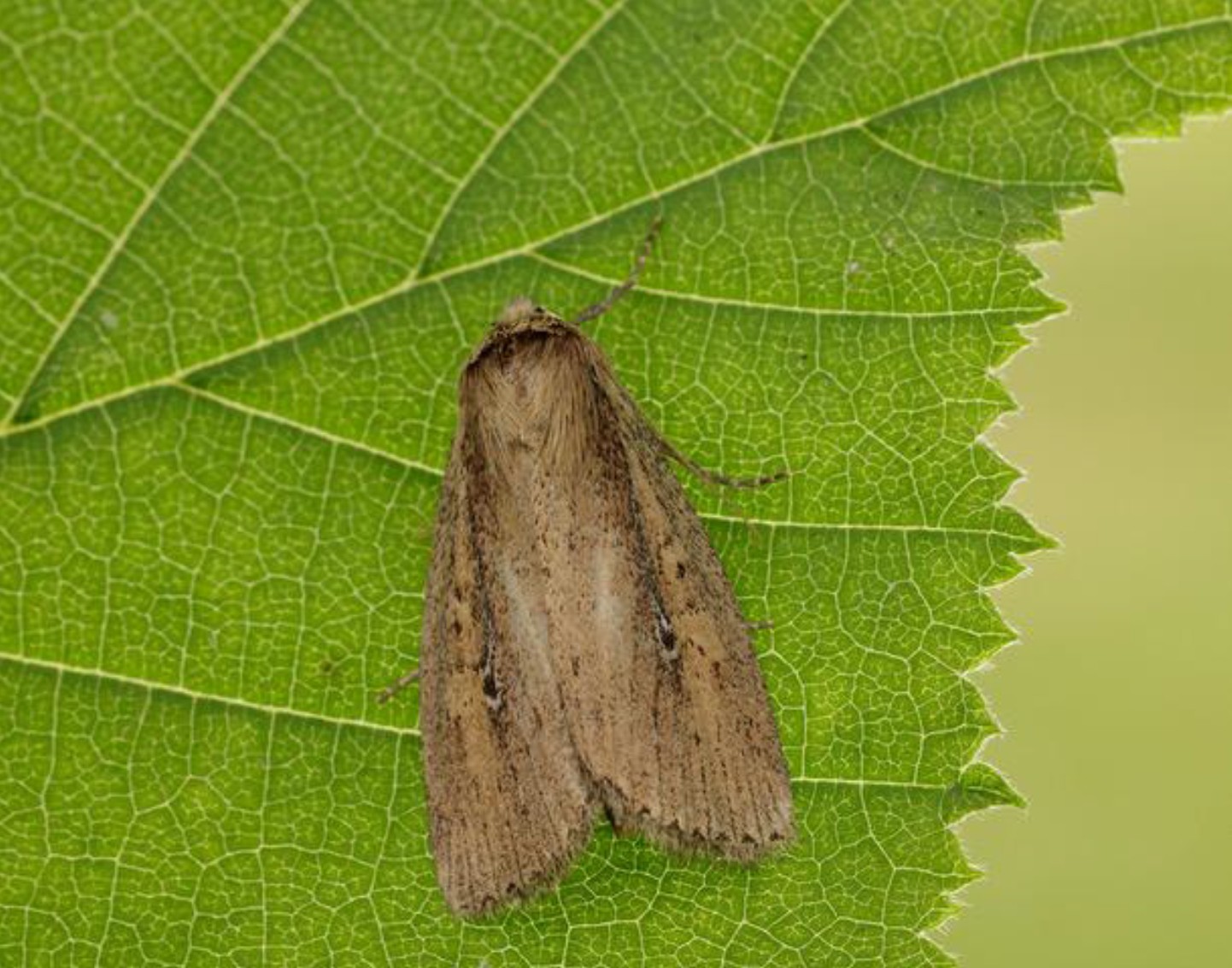This micro-moth’s forewing is only 8mm long and the whole moth is uniform pale sandy (or is it straw?) coloured. This species belongs to an obscure family the Lypusidae which only has four species in the UK. Like the others in this genus this moth lays its eggs in clusters on dead leaves on the woodland floor and the hatching caterpillars construct a case out of a bit of folded leaf in which they live, feeding on decaying plant remains. They may remain as larvae for two years eventually pupating in their case attached to a leaf or at the very bottom of a trunk of a tree. The hatching adult moths fly during the day and at night and come to light-traps.
Only one of the three species, Agnoea josephinae, had been found in Scotland until Richard Mearns caught this individual in a light trap at Almorness Point in Kirkcudbrightshire in June 2022. He realised it was something different but was unable to put a name to it. It required Alison Robertson to dissect this female and prepare a microscope slide of its genitalia before searching the various micro-moth websites for a match. She eventually found it based on the deltoid shape of the very spiny, thickened patch (known as the signum) on the wall of the sac which receives the sperm from the mating male. The overall shape, spiny nature and size of the signum is diagnostic of A. subochreela making this a first record for Scotland.
Elsewhere in the UK this species is thought to be common in some woodlands in the south of England although there are only 17 records on the National Biodiversity Network Atlas and only 2 of these have been recorded since 1990. However, this is a small moth living in a specialised habitat on the woodland floor and could be easily overlooked. It maybe that now we know about it we could find more adults or even the caterpillars in their leaf cases.
Below in the gallery is the composite photograph that Alison Robertson produced from Richard’s moth. The whole moth is shown on the left with the bottom photo clarifying its size against a grid. Right of those pictures are the wings of the moth (this species has grey hind wings and unmarked forewings) and a palp which, again, is characteristically coloured in this species. The genitalia are shown as a preparation on a microscope slide showing the egg-laying tube (the ovipositor) with the opening (also shown magnified) for the male penis which is in a characteristic position for this species. Below this is the sac bearing the signum which is also shown magnified.
This dissection represents a huge amount of skill and time to be certain which species we had. Thankfully many moths, even ones as small as this can be identified from the living specimen but in other cases a dissection of this sort is required to be certain of the species.
This is a great story of good fieldwork and careful sampling along with the expertise required to deal with such small insects. This is a new species to the Dumfries and Galloway list of moths adding to the many other additions which have been seen in recent years.




